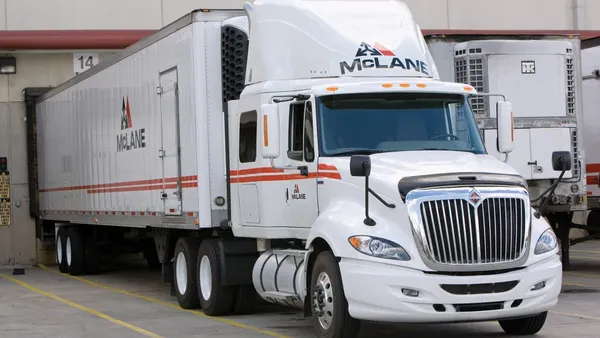Dive Brief:
- British apparel retailer River Island saw inventory accuracy rise from 72% to 97% after the company started tagging most products, Martin Goldstein, head of procurement, told an industry audience in Copenhagen.
- Previously, River Island counted stock once a year, which took a day. Then the company launched an 18-month pilot program using tags, and now inventory counts occur weekly. The counts take up to three hours while sales have increased by 5%.
- With better inventory visibility, stolen goods are restocked more quickly and critical out-of-stocks dropped by 11%.
Dive Insight:
Customers are frustrated with inventory management failures in retail stores and will do more business with companies that get it right. That's why retailers are turning to RFID tagging to improve inventory visibility to improve sales and lower supply chain costs.
River Island is among the apparel brands that have seen strong results by tagging individual items. First, River Island carried out a multi-phase pilot at seven stores, and then in 2016 rolled out RFID tagging at 280 stores, tracking garment sales using tags applied by suppliers, according to RFID Journal. The initial project monitored overall inventory levels at each store, automating replenishment to boost sales. Real-time inventory information is critical when some fast fashion lines have a shelf life of two weeks, Goldstein said.
Retailers including Target and Macy's reported success with RFID tagging on apparel items. Having a real-time picture of inventory is showing better results than simply overstocking on popular items.
Nike bumped up revenues 7% without increasing inventory due to shortening supply chain lead times and investing in RFID tags that allows integration of inventory visibility across the global supply chain. Ultimately, Nike will be better able to match supply to customer demands.
Accuracy for RFID tags can approach 100%, compared to 69% for barcodes, according to a recent study. An increase in stock accuracy can pave the way for omnichannel services like ship-from-store, buy-online return in-store (BORIS) and buy-online pickup in-Store (BOPIS).
Falling technology costs make it possible to tag individual items, Goldstein said, as prices have dropped from $10 per tag to about 25 cents. When River Island first began using RFID, employees would attach tags to items in "tagging parties." Now, suppliers tag items at the factory. RFID tags are competing with Bluetooth tags and other technologies, but RFID tags can be less expensive because they don't use batteries.











